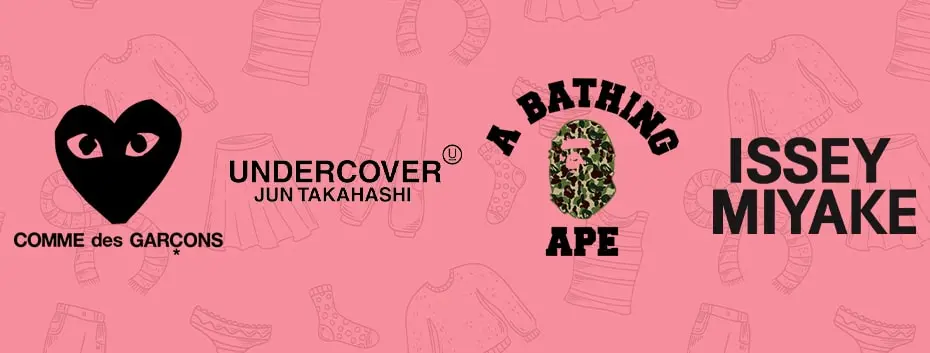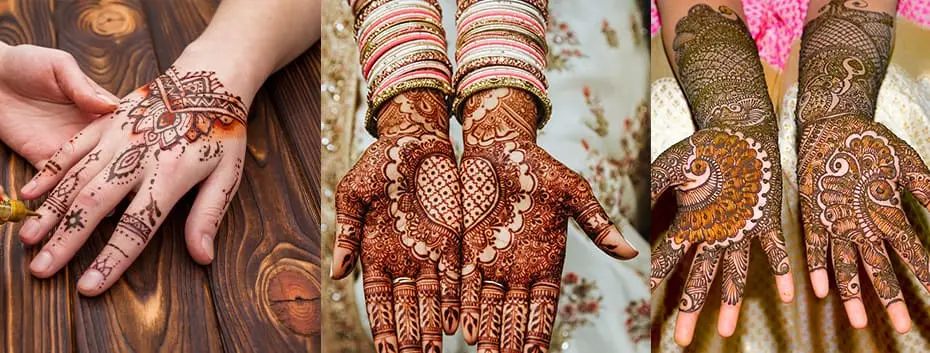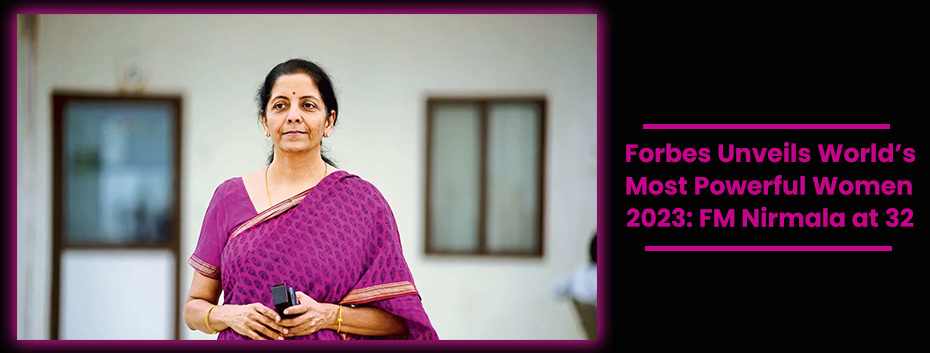![]() English
English
Fashion
Top Japanese Fashion Brands That You Should Know

For many people, fashion is an important part of life. It is also something that is constantly changing and can widely vary depending on location, age range, interests, and many more factors. Back in the 1990s up till the late 2000s, the world of Japanese fashion revolved in Harajuko style, which is undeniably the most popular sought-after fashion across nations.
However, the world of fashion keeps evolving and advancing as the years pass across the globe, and the same applies to Japanese fashion as well. Stepping out from traditional fashion standards and walking into something else that is enjoyed and accepted by the youth.
With fashion evolving, the brands that redefined the way Japanese folks dressed. The main thing here is that Japanese fashion trends and brands have been impacted globally and are loved by millions around the world. From sleek, clean silhouettes, and high-quality fabric material to the diverse styles which are unique and a breath of fresh air to the world.
With that being said, not every brand mentioned in this blog might be available to every corner of the world, it is suggested that you take note of these brands and browse their collections if you visit Japan.
Top Japanese Fashion Brands That You Should Know
Of course, brands like COMME des GARÇONS, A Bathing Ape, and UNDERCOVER have been fashion heavyweights for a long time. It’s only in the past few years that the global fashion audience has begun to learn about the wealth of Japanese clothing brands that have been pushing the envelope of style and creating amazing, high-quality products just out of sight of the masses.
| Brand | Founder | Established | Rating |
| Comme Des Garcons | Rei Kawakubo | 1969 | 4.5 / 5.0 |
| A Bathing Ape | Nigo | 1993 | 4.4 / 5.0 |
| Issey Miyake Fashion | Issey Miyake | 1973 | 4.6 / 5.0 |
| Sacai | Chitose Abe | 1999 | 4.7 / 5.0 |
| Uniqlo | Hitoshi Yanai | 1984 | 4.7 / 5.0 |
| Undercover | Jun Takahashi | 1990 | 4.6 / 5.0 |
| Auralee | Ryota Iwai | 2015 | 4.7 / 5.0 |
| And wander | Keita Ikeuchi & Mihoko Mori | 2011 | 4.5 / 5.0 |
| Wtaps | Tetsu Nishiyama | 1996 | 4.8 / 5.0 |
| Blue Blue Japan | Kenichi Iwaya | 1996 | 4.7 / 5.0 |
| Beams | Etsuzo Shitara | 1976 | 4.6 / 5.0 |
| Muji | Seiyu | 1980 | 4.6 / 5.0 |
COMME des GARÇONS
COMME des GARÇONS is a Japanese luxury clothing brand founded by the self-taught fashion designer Rei Kawakubo in Tokyo in 1969. It is currently based in Tokyo, Japan, and in Palace Vendôme in Paris, France. Rei Kawakubo was born in Tokyo on October 11th, 1942, and started the label in 1969. Kawakubo currently lives in Tokyo, often travelling to Paris to visit COMME des GARÇONS headquarters in the Place Vendôme Paris.
COMME des GARÇONS is popular and recognized worldwide for its avant-garde designs and unconventional silhouettes, introducing deconstructed fabrics, asymmetric cuts, and monochrome colourways throughout its collections. The founder, Rei Kawakubo pioneered conceptual fashion, earning a reputation for anti-fashion and gender-fluid aesthetics. The current COMME des GARÇONS CEO is Adrian Joffe, who has been in the company since 1987. Adrian Joffe married the founder Rei Kawakubo in 1992.
In 1981, COMME des GARÇONS showcased its collections for the first time during Paris Fashion Week and opened its first store in Paris, introducing the luxury brand to the West. The Japanese flagship store is in Aoyama, Tokyo’s high fashion district and the Paris flagship store is in Rue Saint-Honoré, Paris, France, with stores in London, New York, and Berlin. The luxury label has collaborated with Fred Perry, Levi’s, Moncler, Lacoste, Louis Vuitton, and streetwear pioneers Supreme and BAPE, among others.
Due to its long-standing history and high-end quality designs, its clothing comes with a heftier price tag than other clothing brands. The brand focuses on low-key apparel, including t-shirts, shirts, basic long-sleeved jersey t-shirts, and hoodies. On the footwear front, COMME des GARÇONS is one of the most collaborated luxury brands, teaming up with top sneaker brands from Converse, Nike, Salomon, ASICS, and Vans.
The brand has several sub-labels, including COMME des GARÇONS PLAY, recognizable from the iconic heart logo, and menswear-focused COMME des GARÇONS HOMME, and PARFUM.
Official Website of COMME des GARÇONS: https://www.comme-des-garcons.com/
Official Instagram: https://www.instagram.com/commedesgarcons/
A Bathing Ape
The Japanese streetwear brand BAPE (A Bathing Ape) is one of the original streetwear icons, with deep connections to hip-hop and street culture. Like most of the Japanese streetwear icons, BAPE’s roots can be traced back to the Harajuku scene in Toyko in the early 1990s.
Nigo (the original founder of BAPE) opened up his store ‘Nowhere’ in the area and shortly after worked with Sk8thing to launch his own clothing brand, A Bathing Ape or BAPE. Nigo was a fan of 20th-century pop culture, and channeled his love for the 1968 film Planet of the Apes into the name and iconic BAPE logo, as well as referring to the Japanese idiom ‘A bathing ape in lukewarm water.’ The phrase is used to describe somebody who overindulges, making it an almost tongue-in-cheek reference to the same hyper-consumptive youth that would eventually form the cornerstone of BAPE.
The iconic BAPE camo print is perhaps the most fascinating element of the brand, as a graphic that has totally transcended streetwear to become one of the most iconic motifs of the past two decades. The graphic blends several elements in its design; firstly, its obvious reference to military camouflage fits perfectly with the Japanese (and the entire fashion world’s) fascination with military clothing, and secondly; it’s an abstraction of the ape face. BAPE camo manages to flip the script with camouflage which is traditionally designed to conceal and hide, however, in BAPE’s hands, it’s a print you just can’t ignore.
Alongside camo outerwear, the BAPE Shark hoodie is probably one of the most iconic garments in A Bathing Ape history. First released in 2004 it has gathered a serious following over the years, and nobody creates it quite like BAPE. A once coveted rarity the shark hoodies have become a mainstay piece every season but that said getting your hands on the latest drop is still an achievement.
The late 1990s to early 2000s are generally cited as the golden era of BAPE, with products rapidly selling out in Japan and fashion-savvy figures like The Notorious B.I.G. giving the brand some healthy kudos in hip-hop culture. In the early 2000s, Nigo got introduced to Pharrell Williams through Jacob the Jeweller, who noted the two’s similar tastes in jewelry commissions.
Well-known for his laidback persona and youthful free spirit, BAPE’s bright and flashy aesthetic fit perfectly with Pharrell’s personal style, and his success was coupled with greater attention being paid to BAPE stateside.
Official Website of A Bathing Ape: https://int.bape.com/
Official Instagram: https://www.instagram.com/bape_us/
Issey Miyake
Issey Miyake is a fashion designer and founder of the eponymous fashion label. Miyake was born in 1938 in Hiroshima, Japan, and graduated with a degree in graphic design from Tama Art University in 1964 before founding Miyake Design Studio in Tokyo in 1970. The brand launched its first fragrance, L’Eau D’Issey in 1992.
In 1993, Miyake introduced his Pleats Please line, an innovative range of heat-pleated garments. Miyake resigned as the designer behind his menswear collection in 1994 and the womenswear collection in 1999. His successors were Naoki Takizawa and Dai Fujiwara. In 2011, Yoshiyuki Miyamae was announced as the label’s head of design. In September 2019, Satoshi Kondo was appointed head designer.
Issey Miyake’s approach to manufacturing was always rooted in research and experimentation: to “think outside the box” and not be bound by conventional frameworks. Miyake has fostered new ideas by challenging his staff to think beyond trends; and to look at the needs of society at that moment. Miyake created designs and techniques that will endure for future generations.
Miyake’s work and concepts transcend genres and continue to draw attention around the world. In 1986, his clothing appeared on the cover of America’s Time Magazine (January 27th issue), along with an article entitled “Changing Clothes: Issey Miyake,” which dug deeply into his approach to creation. Later he was chosen alongside Mahatma Gandhi, Mao Zedong, the Dalai Lama, and Emperor Hirohito for a special 1999 Time feature on the “Most Influential Asians of the 20th Century” (August 23-30 issue); and was introduced as the “Beauty Maker.” The article stated, “With the future as his guide and nature his inspiration, the path-breaking Japanese designer has created clothing with enduring, global appeal.” The French magazine Le Monde 2 visited the Miyake Design Studio and introduced Miyake and his staff’s work as “not a maison de couture, but a laboratory for development and production, unparalleled in the world” (December 10, 2005 issue).
Yamamoto debuted in 1981 in Paris—revolutionizing the world of fashion through his philosophy of ‘conquering fashion through antithesis’, which is mainly an antithesis to traditional Western clothing. What we love most is how effortless yet high-end the clothes look with black being a dominant colour used throughout.
Official Website of Issey Miyake: https://www.isseymiyake.com/#section0
Official Instagram: https://www.instagram.com/isseymiyakeofficial/
Sacai
Sacai is a Japanese brand founded by Chitose Abe in 1999. Her hybrid aesthetic focuses on re-evaluating typical silhouettes and using contrasting textures to play with 3D design, incorporating sportswear and couture techniques. Sacai has collaborated with Moncler, Dover Street Market, and Nike. Founded in 1999 by Chitose Abe, Sacai has established itself as a cult fashion label in its short 20 years. Abe originally created the brand after motherhood left her seeking a creative outlet. The designer previously spent eight years working at Comme des Garçons as a patternmaker under Rei Kawakubo and later for Junya Watanabe’s team. Abe first set up shop in Paris in 2009, after buyers from Barneys and Colette were beginning to set up accounts. The label’s first appearance on the runway in Paris in 2011 grabbed the attention of even more Western buyers and saw the label flourish, now boasting over 175 international retailers.
Their latest, and what pretty much propelled the brand into global fame has been their collaboration with Nike on the LD Waffle Silhouette. Additionally, what attracts us to Sacai and makes it one of the best Japanese brands is how their collections look to androgynous silhouettes that lean mostly towards streetwear, blurring the lines between formal and casual. We’re big fans of the knits and the scrunched-up blazers that look every bit couture meets street fashion.
Sacai incorporates the idea of hybridization through juxtapositions of contrasting textures of fabrics, such as knits with super fine wovens, and the usage of techniques based on reinterpretations of patterns of the garment, transforming the pieces into unexpected shapes and silhouettes. While her collections may appear to be about femininity, Abe’s interest is in creating clothes that are entirely unique and timeless, innovative and experimental. Vogue magazine has cited Sacai as influential in breaking down the dichotomy between casual and formal clothing.
Official Website of Sacai: https://www.sacai.jp/en-in/
Official Instagram: https://www.instagram.com/sacaiofficial/
Uniqlo
Formerly known as “Ogori Shoji”, Uniqlo was founded in 1974 in Ube, Yamaguchi, Japan by a man named Hitoshi Yanai who started the small-sized men’s tailoring store that primarily sold suits.
After inheriting his father’s chain of these 22 men’s tailoring stores, Tadashi Yanai became the company’s president in 1984 and opened a new store in Hiroshima which was improvised and called Unique Clothing Warehouse and later shortened to Uniqlo. The name “Uniqlo” is a combination of “unique” and “clothing”; a brand that was envisioned to be new-age, transformative, and global. Today, the popular Japanese casual wear brand is best known for its high-quality and functional clothing that is sold at affordable prices. About ten years ago, Uniqlo was only popular in Japan and was not recognized by the large numbers of shoppers spread across the globe. Anyone outside of Japan would be met with a confused look upon hearing the name Uniqlo. However, mention the brand today, and any global citizen would associate it with good quality clothing, fashion, and affordability, and that is how successful the company has become in recent years.
Uniqlo has now become another major contender in the global fast-fashion retail market. Despite having to compete with some of the biggest giants in retail like Zara, H&M, Gap, and Forever21, Uniqlo has managed to grow at an astounding pace and capture a huge share in this competitive business. The company’s evolution and key changes in its branding and overall presence can be attributed to the vision and business insights of Tadashi Yanai. Inspired by his travels to Europe and the US, he saw immense potential for Japan’s casual wear market on an international stage. By observing global trends and fashion needs and by realizing the potential of the Japanese fashion market, Tadashi made plans to move away from being a company that mainly sold suits towards one that could deliver high-quality clothing that is essentially unique in nature.
Uniqlo is a wholly-owned subsidiary of Fast Retailing Company Limited and it is known for providing high-quality private-label casual wear at low prices. As of September 2019, the brand has grown to more than 2,250 stores in 25 countries across Asia, Europe, and the US in just a matter of 22 years. It is the biggest apparel chain in Asia with over 800 retail stores in Japan alone. Uniqlo caters apparel to mainly 3 customer segments: Women, Men, Kids, and babies. The brand is divided into five sub-brands separated by style but housed under the same Uniqlo store, within which Uniqlo showcases its collections.
Official Website of Uniqlo: https://www.uniqlo.com/in/en/
Official Instagram: https://www.instagram.com/uniqloin/
UNDERCOVER
UNDERCOVER, founded by Jun Takahashi, takes the various elements of art, music, and subculture and combines them into high-end fashion. Each collection is developed with the unique viewpoint of the designer. Since moving his collection from Tokyo to Paris in 2002, UNDERCOVER has gained a unique presence in the world. Equally revered as a cult name in streetwear and as a fixture on Paris’ high fashion calendar, it is as if Supreme and Chanel were a single entity, injected with a dose of Tokyo underground. Designer Jun Takahashi was born in Gunma Kiryu. He graduated from Bunka Fashion College in 1991 and started UNDERCOVER in 1990 before graduating. In 1994, Takahashi debuted his first 1994-1995 Autumn/Winter collection in Tokyo. Since 2002, he has been presenting his seasonal collections as part of Paris Fashion Week. In 2018, he launched a creative team UNDERCOVER PRODUCTION.
Official Website of UNDERCOVER: https://store.undercoverism.com/
Official Instagram: https://www.instagram.com/undercover_lab/
Auralee
Created in 2015 by designer Ryota Iwai, AURALEE’s name comes from an old American folk song and translates to “The Land That Lights Up.” According to its founder, he envisions the clothes to be worn in the morning light, making the name all the more fitting. Iwai began his fashion career at NORIKOIKE, learning about textiles and patterns from the ground up. This experience became a cornerstone for his work and for the brand at large. Iwai time and again has emphasised the importance of fabrics for the brand. Each material is carefully developed, which is evident in each garment they offer. Their website has an extensive list of articles for their raw materials, fabrics, and processes too. Even a standard material like wool is thoughtfully considered to stack up to the rest of their excellent range of fabrics. They’ve been building relationships with most of their fabric partners since the very first season of the brand’s inception.
The fabrications stand out on pieces like the Finx Natural Garbadine Product Dyed Blouson, the Cotton Mole Melton Hand Sewn Blouson, and the Super High Gauge Cotton Knit Cardigan. We have been impressed with every piece that has come through from this delivery, whether it’s the precise drape of a shirt, or the impeccable craftsmanship on each piece down to the last stitch, every element has been meticulously done with intention. By stripping away unnecessary embellishments, AURALEE creates clothing that allows the wearer’s personality to shine through effortlessly. That same unrelenting commitment to fabric is also seen in the brand’s craftsmanship. This devotion to quality extends to every stage of production, with AURALEE’s skilled artisans employing traditional techniques to create garments of exceptional quality. There’s a unique feeling of luxury that comes with their clothes. Oftentimes, luxury comes with careful delicateness. That can be a detriment as it can create hesitation in wearing your clothes. But with Iwai’s dedication to making wearable pieces, AURALEE achieves that luxury without these pieces feeling too delicate to wear.
The brand’s popularity has steadily grown since its inception, attracting a global following of fans who appreciate the brand’s refined aesthetics and craftsmanship. Despite this growing popularity, AURALEE remains relatively unknown to many. We’re thrilled to have a home for them here at the shop. Even with all the advanced fabrication that the brand offers, AURALEE remains versatile and approachable. Wherever you fall in the personal style spectrum, we believe AURALEE is a brand that deserves your attention. In a saturated fashion landscape that has been relying on hype, and exclusivity to turn clothing pieces into broadcasting moments on social media, they’ve set themselves apart with their conscientious approach to design. AURALEE is redefining the idea of luxury with each collection, proving that elegance doesn’t always need to shout to be heard.
If you’re looking to elevate your wardrobe with timeless pieces that will transcend trends, look no further than AURALEE. Embrace the elegance, immerse yourself in their amazing world of fabrics, and discover a brand that celebrates the beauty of simplicity.
Official Website of Auralee: https://auralee.jp/
Official Instagram of Auralee: https://www.instagram.com/auralee_tokyo/
and wander
This fashion brand was launched in the spring/summer of 2011.
Charmed by nature and enjoying the thrill of the mountains, wander’s combined project design ability refined with the Paris Collection brands and the sensation of the mountain atmosphere creates their own outdoor fashion and gear. The designer of this fashion brand Keita Ikeuchi was born in 1978 and is from Kanagawa Prefecture. Works on design and development of apparel and other merchandise as part of ISSEY MIYAKE MEN design team.
Mihoko Mori, born in 1978, from Tokyo. Works on design and development of apparel and other merchandise as part of the ISSEY MIYAKE design team. This brand was born of a strong passion of the two founders: for making “fashion in the nature/mountains just as enjoyable as the everyday fashion”.
Designers Keita Ikeuchi and Mihoko Mori, who honed their skills while working at Sakai Designs, have taken inspiration from time spent in the Japanese mountains and fused it into their collection of clothing and bags. The collection is only of products that they have extensively used in the field, demonstrating their effective use even in harsh outdoor environments. And Wander combines smart, fashion, and high functionality. Materials with high water resistance properties have been used so they are safe to use even in sudden downpours of rain. A specialty rain cover for backpack use is also available.
The combination of fashion and function works with and wander. After winning the 2016 Tokyo Fashion Award, in 2017 they opened their first flagship store in Tokyo called MT–functional creative comfortable. It is also a gathering place for those who share the same passion, for opening the store also meant the two designers could fulfill another desire, founding the And Wander Hiking Club. As Ikeuchi explains: “We hope that people will integrate such pleasures into their lives.” The club regularly holds events for customers such as hiking tours, camping trips, or ski excursions. Their range has been expanded accordingly to include outdoor foods and drinking bottles, which are also sold in branded packaging. Around 30 pieces within the entire collection are accessories.
Official Website of and Wander: https://www.andwander.com/
Official Instagram of and wander: https://www.instagram.com/andwander_official/
Wtaps
The significance of WTAPS in the fashion industry, you ask? Well, its prominence is comparable to a powerful game-changer, disrupting the industry much like Apple did in the tech world. WTAPS has made a significant impact not just by creating popular apparel, but by defining a narrative of evolution, growth, and tenacity in the world of fashion.
Established in 1997 by Tetsu Nishiyama, WTAPS quickly grew to rival the likes of brands such as Supreme in sell-out times. Imagine, if you will, a rock concert where tickets sell out within minutes. That’s the level of popularity we’re talking about here. To better paint this picture, let’s set a personal scenario. You know how you have that favourite old-school, military-style jacket that has stood the test of time and continues to be your go-to piece? This is precisely what WTAPS does – but on a grander scale.
The brand consistently redefines itself while maintaining its high-quality, military-inspired style. Its collections are not just pieces of cloth stitched together but stories woven into a fabric that embodies philosophy, evolution, growth, and spirituality. It is a reflection of the personal beliefs of its founder, Nishiyama. WTAPS has partnered with renowned brands like Supreme, Carhartt WIP, A Bathing Ape, and NEIGHBORHOOD to create unique clothing lines. Nishiyama often wears the clothing he designs, demonstrating the brand’s daily wearability and distinctive aesthetics, perfectly embodying the phrase ‘practice what you preach.’And the creative genius behind the brand can’t be appreciated enough. Before launching WTAPS, Nishiyama had another venture called FORTY PERCENTS AGAINST RIGHTS (FPAR).
While most brands were leaning towards replicating Western styles, Nishiyama chose a different path, weaving his appreciation for military styles and his philosophies into the brand’s DNA. Each collection introduces elements of philosophy, evolution, growth, and spirituality, reflecting not just the style, but the personal beliefs of Nishiyama himself. They deliver high-quality clothing that they stand behind. In essence, WTAPS stands out by not just selling clothing, but by offering bits of a unique perspective built on self-introspection, spirituality, durability, and a distinctive flair for streetwear and military aesthetics. Like any dynamic entity, WTAPS continues to evolve – staying ahead of the streetwear curve, charting new directions, and pushing boundaries. This brand is as unique as a treasure chest which is brimming with a range of high-quality clothing inspired by military style.
Everything they design is similar to that – multifaceted. They throw elements of philosophy, evolution, growth, and spirituality into their clothes. It’s like they’re not just designing clothes, but they’re crafting stories. Their pieces are more than just clothing, they’re expressions and markers of the wearer’s journey. It’s noteworthy that the brand also offers men’s, women’s, and youth apparel through their label Descendant. It’s as if they’re building a fashion legacy across generations. Each line satisfies a different segment but carries the same level of quality and inspired design. Overall, the brand is pretty cool, like the intersection where your favorite book and a comfortable hoodie meet.
Official Website of Wtaps: https://www.wtaps.com/
Official Instagram of Wtaps :https://www.instagram.com/wtaps_tokyo/
Blue Blue Japan
Blue Blue Japan is a Japanese apparel and lifestyle brand that uses natural indigo to construct distinctive yet comfortable, premium clothing pieces. Combining traditional Japanese dyeing techniques with urban influences, Blue Blue Japan creates garments that gain character through time. Highly original with a unique brand personality, Blue Blue Japan has instantly earned a global cult following. Blue Blue Japan was launched in Tokyo in the early 90s and has a distinctive aesthetic that revolves around its use of indigo denim. The indigo dye that has made the brand so recognizable is all-natural and the fabrics that it’s applied to are high quality without exception. The pieces are put together using traditional techniques, both concerning coloring the fabric and finishing the items, and this gives them an individual and traditional feel. The clothing range from the brand includes round-neck T-shirts in printed and plain designs, jacquard slim-fit pants, and cotton shirts with plenty of indigo dye used throughout.
Blue Blue Japan strives to make comfortable clothing and other life-oriented items to be loved for a long time of one’s life. As indicated by the name «Blue Blue Japan», they stick to made-in-Japan production by incorporating Japanese traditional techniques and methods like Pure Indigo dyeing. Since its establishment in 1997, Blue Blue Japan has become known for its dedication to superior-quality denim and traditional Japanese dyeing methods.
Official Website of Blue Blue Japan :https://www.bluebluejapan.com/english
Official Instagram of Blue Blue Japan: https://www.instagram.com/blue_blue_japan/
Beams
Beams is one of the brands that continued to pave the way, cementing themselves as pioneers of modern taste. The name Beams is as synonymous with Japanese style and culture as Ferrari is to Italy and the world of motorsport. From its humble beginnings in Harajuku in 1976, to a host of high-profile collaborations, Beams remains a well-respected architect of style with an international impact. The original aim of Beams was “to bring change to the culture and lifestyle of Japanese youth”. Over the years, the brand has worked as an editor extraordinaire by curating a select offering and working towards “the simple mission of shining a light on great products from around the world”. The name Beams itself plays on the brand’s original ambition; “casting a light on quality products from around the world, supporting others as a solid structural unit and leaving customers with beaming smiles”.
The brand has a firmly rooted global presence which continues to grow and a dedicated team of staff who support the company’s philosophy. It’s safe to say that over 40 years after its inception, Beams has accomplished more than most. And perhaps what is most staggering is that the brand has remained true to its core principles, all the while expanding in new and innovative ways, but never diluting its offering.
Official Website of Beams: https://www.beams.co.jp/global/
Official Instagram of Beams: https://www.instagram.com/beams_official/
Muji
Muji was founded in 1980 in Japan. They offer lots of products like furniture, household goods, fashion apparel, and food. There are more than 700 MUJI stores around the world, carrying more than 7,000 items. A brand known for its minimal aesthetic and clean lines and has products ranging from stationery, skincare, clothing, and accessories {for men, women & kids} to soft furnishings, home decor, and furniture. or producing functional lifestyle products relevant to all aspects of urban living. Since its launch in the 80’s, the focus has always been on the value-led, less is more concept. MUJI embraces minimalism by eliminating unnecessary elements and harmful toxins from its products. Where possible, MUJI uses repurposed and natural organic materials, making their products environmentally friendly and safe for everyday consumption.
MUJI features an assortment of over 7,000 products, offering shoppers a variety of options to choose from, in categories such as health & beauty, storage, kitchen and dining, travel accessories, bedding and furniture, and fashion. With over 600 stores worldwide, MUJI also operates in the Middle East, including Kuwait, UAE, KSA, Bahrain, Qatar and Oman.
Official Website of Muji: https://muji.in/
Official Instagram of Muji: https://www.instagram.com/mujiindia/
FAQs
Is every popular and top Japanese fashion brand available in India?
Not every Japanese fashion brand is available in India but you can find most of the Japanese fashion in the Indian market.
What are some of the top Japanese fashion brands?
Uniqlo, Wtaps, Beams, Blue Blue Japan, and Sacai are some of the Top Japanese Fashion brands across the world.
What style of clothing is Japan known for?
The traditional dress of Japan is the kimono. Kimonos, which are generally made of silk, have large sleeves and reach from the shoulders down to the heels. They are tied with a wide belt called an obi.
What are some affordable Japanese fashion brands?
Uniqlo, Beams, Honey’s, Muji, Blue Blue Japan, Nano Universe, and Ambush are some of the affordable Japanese fashion brands.
Where can we mostly find these products in India?
Ebay, Fasbee, and the Collective are some of the platforms where you can find most Japanese fashion apparel in the Indian market.




